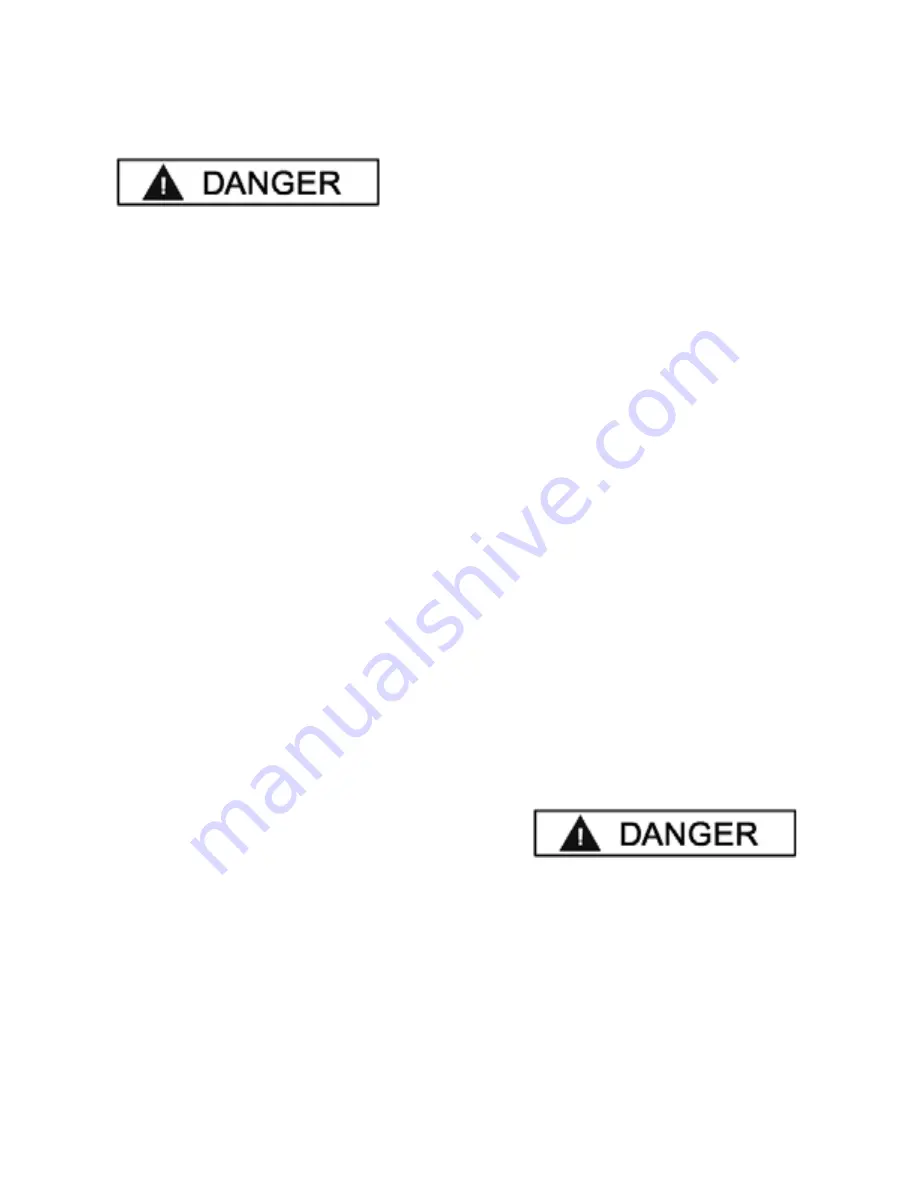
6
SECTION 3
TIRE AND WHEEL SERVICE
SAFETY INSTRUCTIONS
Only properly trained personnel should service tires and
wheels on the RX-23LT/ 23AT. Read all safety and
operating instructions thoroughly before use. The following
safety instructions are for one piece wheels only. Always
refer to the manufacturer’s procedures for multi-piece
wheels.
ALWAYS
wear durable personal protective work clothing
and safety gear during tire service activity. Refer to page
three for Operator Protective Equipment.
ALWAYS
remove all wheel weights and the valve core to
deflate the tire before servicing.
ALWAYS
keep all working surfaces clean and free of
debris.
ALWAYS
be aware of what each person is doing and what
they will do before attempting any two-person operation.
ALWAYS
cover the electric motor and switch box before
hosing down the tire changer. Be sure water does not enter
the motor or switch box.
ALWAYS
disconnect the electric power and air supply
before attempting any maintenance.
Bead Loosening Disc
NEVER
place anything between the bead loosener disc and
the tire/wheel.
NEVER
allow the bead loosener disc to contact the wheel
or wheel damage may occur.
NEVER
place any part of your body between the bead
loosener disc and the tire/wheel, severe bodily injury may
result.
Demounting & Mounting
ALWAYS
clean and inspect the wheel prior to any service.
NEVER
stand on the sliding carriage, frame or work table
while demounting or mounting a tire.
ALWAYS
keep hands, feet, and other objects away from
moving parts while the machine is turned on.
ALWAYS
place the narrow bead seat to the outside when
clamping. Failure to demount the tire from the narrow bead
seat side may cause damage to the tire beads.
ALWAYS
apply an approved rubber lubricant to rim flanges
and both tire beads before demounting or mounting and
seating the beads.
NEVER
mount a tire on a damaged or rusty wheel as tire
or wheel failure may result during inflation. Explosion from
failure may result in severe injury or death of the operator
and bystanders.
Inflation
ALWAYS
be sure the bead opposite the tool is in the drop
center before rotating the tire when demounting or mounting
to avoid damage to the tire beads.
ALWAYS
follow all applicable Local, State, and Federal
Codes, Rules, and Regulations; such as the Federal OSHA
Standard Number 1910.177.
ALWAYS
use an approved inflation chamber or infla-
tion cage equipped with a self-gripping chuck and remote
inflation gauge and valve.
ALWAYS
inflate the tire to manufacturer’s recommended
cold operating pressure.
DO NOT OVER INFLATE!
Tire or wheel failure during and
after inflation may result in an explosion capable of causing
severe injury or death.
NEVER
reinflate a tire that has been run under inflated or
flat without first demounting the tire and checking for wheel
and tire damage.
ALWAYS
inspect the tire interior for loose or broken cords,
cuts, penetrating objects, and other damage. Discard tires
that cannot be properly repaired.
NEVER
rework, weld, heat or braze wheels.
NEVER
strike the tire or wheel with a hammer.
ALWAYS
be sure the tire diameter exactly matches the
wheel diameter.
DANGER!
Tire failure under pressure can be hazardous. When
possible, always place wheels inside an approved inflation
chamber or cage before inflating. Use an approved remote
inflation valve, hose, and gauge. ALWAYS wear safety
goggles for eye protection. Do not stand beside the wheel
or cage during inflation. Keep hands and other parts of the
body out of the cage during inflation. Observe the tire
pressure frequently. Do not exceed the manufacturer’s
recommended maximum inflation pressure. Failure to
follow these instructions may cause the tire and rim to
separate with tremendous force, resulting in serious
personal injury or death.






















